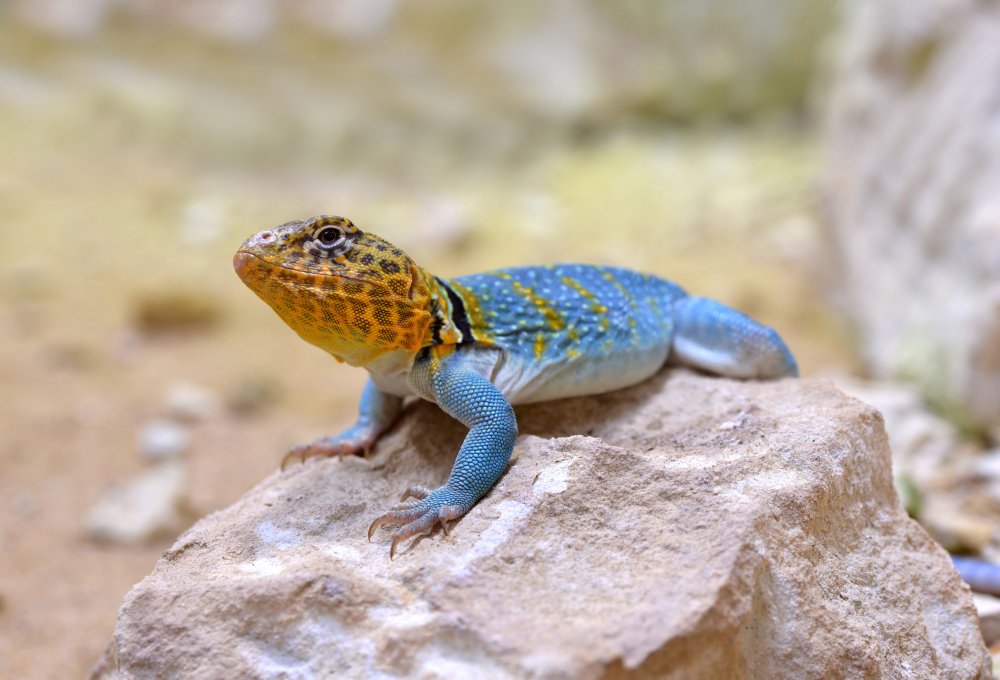Crotaphytus collaris
There are currently nine recognised species of ‘collared lizard’ that stretch throughout the arid regions of the Southern United States and Mexico. All species are fast-moving and generally exhibit stunning colouration particularly around the breeding season. Crotaphytus collaris, or the ‘common’ or ‘Eastern’ collared lizard is the most popular species in the hobby and are now routinely captive-bred in the UK.
There are five distinct subspecies of Crotaphytus collaris, all of which present slightly different colouration. Their active personalities, bright colours and reasonably straightforward requirements in captivity makes collared lizards some of the most rewarding reptiles to own and will appeal to anyone looking to keep active desert-dwelling reptiles. It is possible to keep a small colony of one male to two females, but this should be reserved for keepers who have the facilities to separate the animals if the male becomes aggressive (which is common during breeding season). Otherwise, a single male or single female can live happily on their own.

Collared lizards are diurnal and should be provided with Ferguson Zone 3 lighting (UVI range of 1.0 – 2.6, with a maximum of 7.4 in the basking spot). The enclosure should be laid out to ensure that the lizards can move closer, or away from the lighting by providing various décor and hides throughout. Keepers should aim to provide the largest vivarium possible for these active lizards. Although they will not tolerate handling like bearded dragons, a similar set up is recommended. This means a cool end of around 23°C, a warm end of around 30°C a basking spot of 36°C+. Unlike bearded dragons, temperatures should drop quite drastically during the winter months to encourage brumation. Once the lizards wake, they will be more receptive to breeding. Providing a few inches of loose substrate such as Leo Life and Beardie Life is important to encourage natural digging behaviours.
Collared lizards are insectivorous. However, in the wild they will opportunistically feed on brightly coloured flowers found on cacti. As such, a primary diet of crickets, locust, roaches, morioworms and waxworms should make up the bulk of their diet but dandelions, grated carrot and chopped strawberry can also be fed. These are naturally rich in carotenoids but feeder insects should be gut loaded with a premix (or brightly coloured veg) to ensure they are also rich in carotenoids, which helps the lizards achieve their full colour potential.
